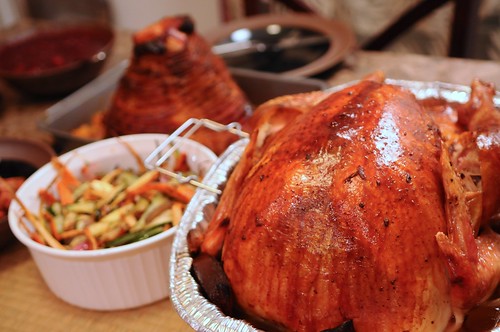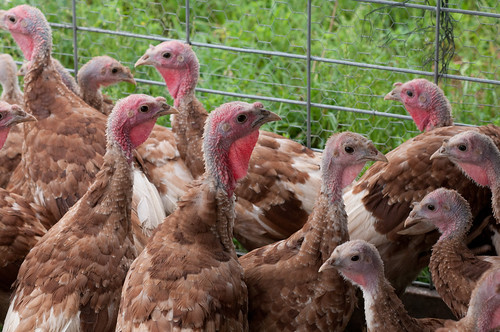
The Thanksgiving season is upon us, time for family homecomings, parades, and football games. More importantly, time for the annual turkey feast. As the marketing season hits full stride, the question on everyone’s lips this year is…will there be a shortage of turkeys? The simple answer is: no.
To fully answer the question though, we have to go back to late March when commercial turkey flocks in the Upper Midwestern production region were overtaken by rapid outbreaks of highly pathogenic avian influenza (HPAI). HPAI, while harmless to humans, is devastating to turkeys and within a few short weeks over 7.5 million commercial turkeys succumbed to the disease. While the total loss represented just over three percent of the total number of birds raised in the U.S. in 2014, the short time period during which losses occurred left the industry scrambling to cover their business needs.
At the time, the industry was gearing up for summer demand for processed turkey meats–which are produced largely from heavier tom turkeys that yield a higher percentage of boneless meat. The disease had a disproportionate impact on tom flocks, leading to reduced availability of turkey meat and reduced deli meat promotions in store advertisements.
But Thanksgiving is all about whole turkeys—not deli meats. Early each year, supermarkets work with processors to contract for the following Thanksgiving’s anticipated demand. Over two-thirds of the turkeys purchased by consumers for the holiday are frozen, allowing processors to schedule production during the first half of the year and place the birds in cold storage. As the summer processed meat demand peaks, processors then switch their focus to producing the other one-third of whole turkeys that are sold fresh during the holiday season.
The HPAI bird losses occurred at a time when a large percentage of frozen whole bird production was already complete. By early July–with most of their holiday orders safely in the freezer and as HPAI outbreaks subsided and quarantines were lifted–processors moved quickly to restock the affected farms. With time against them, processors opted to place hen poults into production as hens require fewer weeks to reach market weight and the industry was eager to have as many fresh whole birds available for the holiday as possible. This does mean fewer large (tom) fresh birds are available for Thanksgiving than in years past.
So what does this mean for consumers heading to the supermarket to buy their main course? Turkeys continue to be the marquee draw in supermarket ads and promotions. Sale prices for frozen birds are largely unchanged from last year, but retailers are placing more limits on the number of birds that shoppers can buy at the advertised prices.
There are also fewer heavier-weight birds for sale, and prices for fresh birds are slightly higher in many markets. Supplies of specialty turkeys–like organic, free-range, and antibiotic-free–are widely available and competing products—particularly hams—are more available at lower sale prices from last year, providing options for less traditional-minded consumers.
From all of us at the Agricultural Marketing Service (AMS), we wish you and yours a very Happy Thanksgiving!

